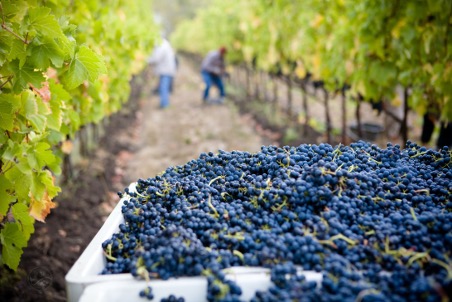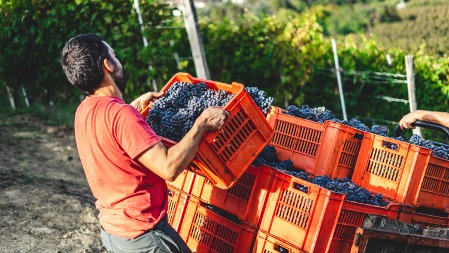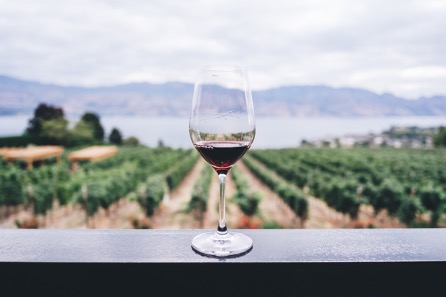VitiMeteo - as its name suggests - is a prognostic system for crop protection in viticulture.
VitiMeteo is a joint project by:

- State Viticulture Institute Freiburg
- Agroscope Switzerland
- GEOsens GmbH
- with the support of the Baden-Württemberg Ministry for Rural Areas and Consumer Protection
The VitiMeteo platform offers forecast models, weather data and monitoring for viticulture, based on weather measurements in vineyards, on weather forecasts and observations of the vines.
Since 2009, meteoblue has been supplying the platform with weather forecasts, which have now reached unique accuracy with the help of mLM technology. Consultants and winegrowers in several countries in Europe, Africa and Australia rely on the meteoblue forecast.
Ronald Krause, head of informatics at VitiMeteo, explains their choice of a weather data provider: "We realised from the start that this project will be extremely challenging technologically, but the goal was clear - to provide winegrowers with state-of-the-art technology and up-to-date information. When we were looking for a partner to supply weather forecast data at the time, it was only meteoblue that was able to provide weather data for all of Europe and beyond."
Customer success story: ...like a fine wine


Let us begin with a little bit of terminology:
We all know what agriculture is. Most of us heard of horticulture too. But viticulture? Perhaps this word is not 100% familiar, so let us get this out of our way before proceeding further. In a dictionary, you will find a definition saying that "viticulture or winegrowing is the cultivation and harvesting of grapes".
Yes! As the title suggests, we are going to take a look at winegrowing.
Specifically, on what happens when the ancient craft of wine production encounters the sectors of information technology and big data.
Farmers and the weather
Since its invention thousands of years ago, agriculture has always crucially depended on one thing - the weather. And for thousands of years, farmers had no trustworthy weather information to rely on (spare the few truthful traditional weather sayings) - only their experience.
This dire situation improved dramatically in the 20th century with the advent of numerical weather prediction, and continues to advance in the 21st century as the computational power of modern IT hardware grows at a steady pace, which enables meteorological services to further refine their forecasts - making them more accurate, bringing longer forecast time ranges, a larger variety of weather variables, and higher prediction probability. All this recent progress makes weather forecasting more reliable, which in turn increases the effectiveness of all areas of agriculture - including viticulture.

Introduction VitiMeteo
VitiMeteo, a consortium of Swiss Agroscope, German State Institute of Viticulture and the private company GEOsens, developped a system to provide winegrowers with information regarding plant diseases and their treatment. It does so in real time, and in an intuitively understandable fashion.
Ronald Krause, Co-founder of GEOsens and long-term member of the VitiMeteo consortium, describes it in the following words: "VitiMeteo is an international project, involving a variety of organisations from both the private and public sector. Our aim is to provide support for decision-making in the realm of viticulture."
What is the story behind VitiMeteo? Mr. Krause recounts: “VitiMeteo is the outcome of a long and strenuous effort to save viticulture. You see, in the 2nd half of the 19th century, new grape diseases arrived in Europe from the New World, and viticulture was severely impacted. The very existence of viticulture in the future was no longer certain - the diseases rapidly wiped out as much as two thirds of wine-producing areas, and the remaining vineyards suffered acute decrease in the quality of the produced grapes. Only after rigorous scrutiny were the contemporaneous wine-growing experts, such as Prof. Karl Müllers, able to arrive at the solution; and it was their endeavour what marked the advent of science-based cultivation of grapevine. Prof. Müllers’ research ultimately lead to the foundation of the State Institute of VitiCulture in Freiburg (DE), and some 80 years later, the State Institute of VitiCulture launched VitiMeteo, which quickly became one of the most prominent systems for disease forecast in Europe.”
Presently, VitiMeteo's interactive interface offers information on the weather (both numerical weather forecast data and weather station measurement data), updates about the current outbreaks of fungal diseases, insect parasites, as well as about phenology, and much more.
Mr. Krause continues, describing VitiMeteo's humble and laborious beginnings:
"We realised from the start that this project will be extremely challenging technologically, but the goal was clear - to provide winegrowers with state-of-the-art technology and up-to-date information. There was a lot to tackle, but the gravest challenge turned out to be the question, how to obtain quality weather data. When we were looking for a partner to supply weather forecast data at the time, it was only meteoblue that was able to provide weather data for all of Europe and beyond."
Bespoke weather forecasting
Why all this fuss about weather forecasting? There are currently hundreds of private weather data companies, and surely their products cannot be strikingly different - after all, it's just the weather, right?
Wrong.
Mr. Krause goes on to explain why a generic weather forecast would not be sufficient for VitiMeteo's needs: "As we specialize in the prediction of plant diseases, we work with some highly uncommon parameters, such as leaf wetness."
Why leaf wetness? Mr. Krause explains:
"If the leaves are wet is highly important factor for a strikingly high number of plant diseases. There are plenty of sensors that measure leaf wetness but getting a good forecast for leaf wetness is not easy. Again, meteoblue was then the only weather service able to provide this weather variable. Since then, we worked together to improve this special forecast parameter. By now meteoblue delivers the best, most detailed leaf wetness forecast globally available for the agricultural domain.
Cheers to fruitful cooperation!
What does the future hold for viticulture? What major issues will the field have to tackle in the years to come?

Mr. Krause's answer is clear - what will continue to make the difference is the quality of your data. He concludes, depicting his experience and future plans:
"We have relied on meteoblue for more than a decade now, and although we have been working with other services in some projects, we never have even thought of switching. The meteoblue service has been always technically 100% reliable and has always delivered a top-quality forecast. The meteoblue team has been able to come up with a convincing solution for every question we asked them. Working with meteoblue was, and is, one of the best professional experiences I can think of, and we intend to continue in the future."



